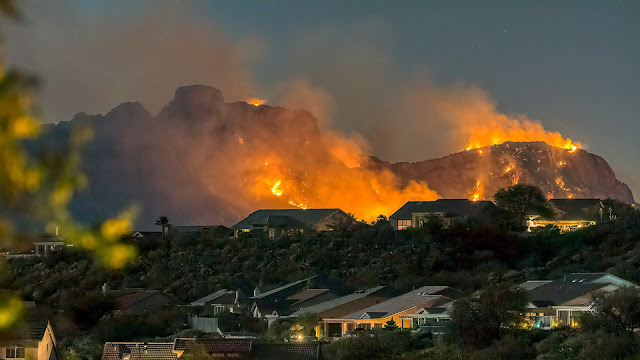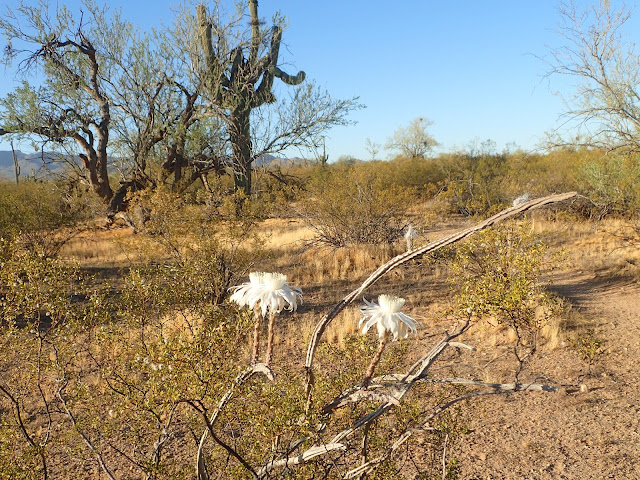The short blast of hummingbird migration, mostly in form of super aggressive Rufous Hummers, has passed the desert. A lone Costa's male is again king of the realm. We named him, or his predecessor Charlie years ago. The hummingbird feeder is emptied every night by Lesser Long-nosed Bats, But thanks to Randy's diligence Charlie hardly notices that intrusion.
We are sitting at our patio table having breakfast. Since the sun is reaching into the depth of the patio, Charlie pays little attention to his sugar water feeder. Instead he regularly takes off from his roost on the chain of an empty planthanger to buzz my face, my bare shoulders, arms and hands. What? He pays much less attention to Randy, who is covered by his usual long-sleeved, pearl buttoned western shirt
Today, the intrusive bird is not the only annoyance. Little flies, less than 2mm long and with a fat, light colored abdomen keep landing on my skin or hovering in front of my eyes. If those are no-see-ums the name does not quite fit: I can see them dancing in the the rays of the rising sun. Nearly like dust particles, but not quite.
When Charlie finally picks one from my arm I am sure that the bird's behavior is correlated to the prevalence of those bugs on this cool, sunny morning. He can obviously see them very well. He even grabs them out of the air in front of my nose. He is molting, so I guess he can use the proteine.
I know that many bird watchers would be happy to have a 'trusting friend' like Charlie defending them from intrusive bugs. But being a sceptic, even a cynic, and a scientist, I have a different interpretation. The bird is certainly used to us - we sit there quietly eating, reading, solving cryptoquips and sudokus, every morning, all year round. We are part of the landscape. Depending on barometric pressure, temperature, wind or humidity, skipped shower after running, we attract different numbers of those little insects. Like any warm rock, tree trunk or flower. By not showing any fear, Charlie is not showing friendship or trust, but simply objectifying me. I am sure he never thinks of me by any name ...



















